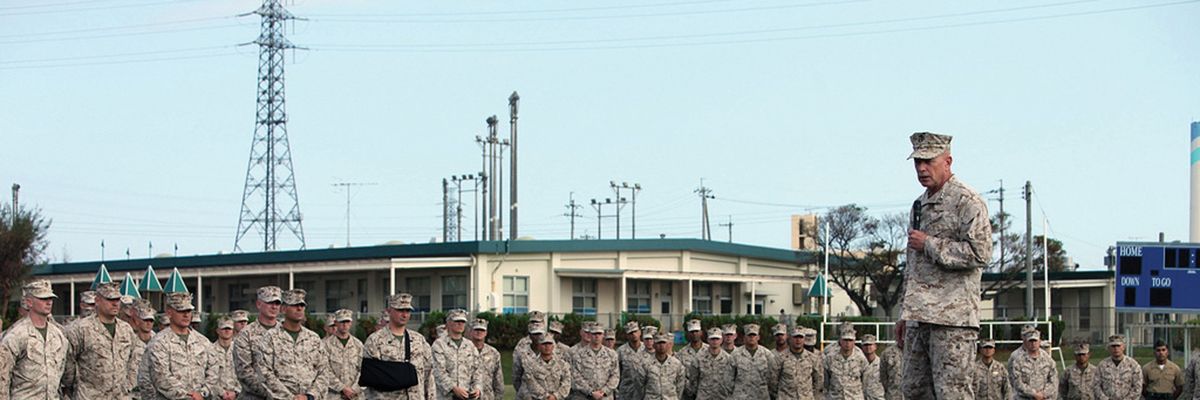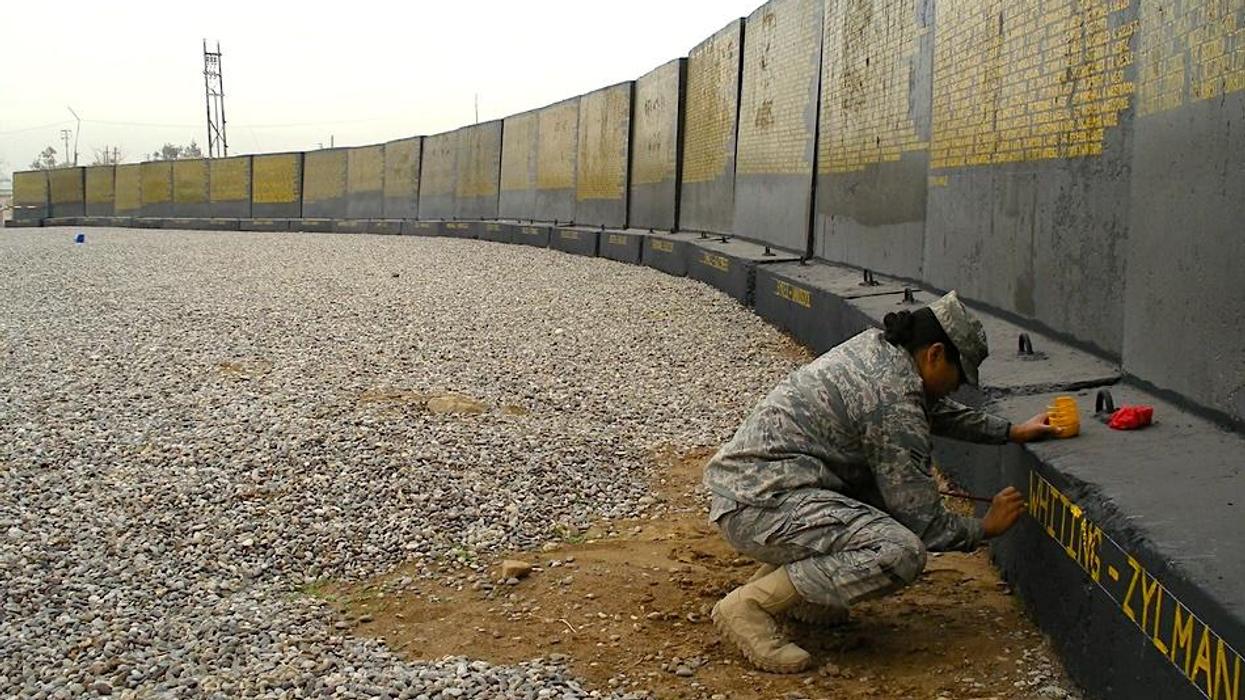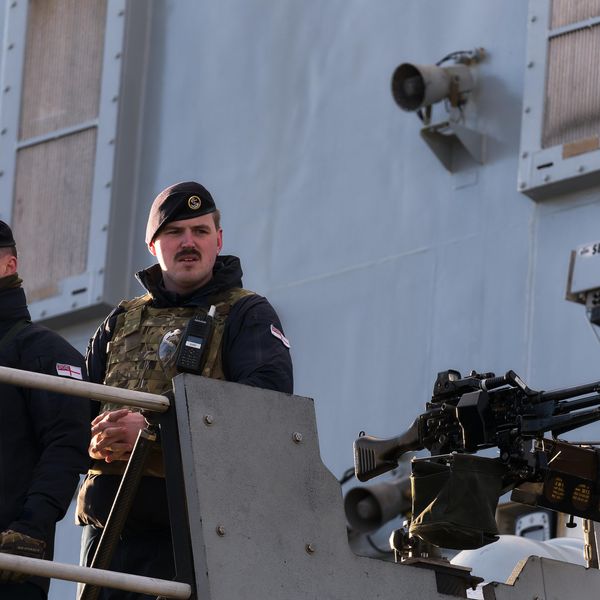For every State Department embassy, consulate, and mission there are nearly three U.S. military bases overseas. The disparity between the 277 U.S. diplomatic installations and the estimated 800 U.S. military bases abroad symbolizes how dangerously militarized U.S. foreign policy has become.
Thankfully, across the political spectrum — and even within the U.S. military — there is growing recognition of the problem. Last month the Biden administration announced the Pentagon will conduct an urgently needed “Global Posture Review” to ensure the deployment of U.S. military forces around the world is, as President Joe Biden said, “appropriately aligned with our foreign policy and national security priorities.”
This review offers a historic opportunity to close hundreds of unnecessary military bases abroad and improve national and international security in the process. In contrast to former President Donald Trump’s hasty attempt to withdraw bases and troops from Syria and his attempt to punish Germany by removing installations there, the Global Posture Review provides a chance to close bases carefully and responsibly, save money, and build back U.S. alliances and diplomatic presence worldwide.
“I think we have too much infrastructure overseas,” the highest-ranking officer in the U.S. military, Joint Chiefs of Staff Chair Mark Milley, admitted in December. “Is every one of those [bases] absolutely positively necessary for the defense of the United States?”
Milley called for “a hard, hard look,” acknowledging that many overseas bases are “derivative of where World War II ended.” Since that conflict and the start of the Cold War the United States has maintained thousands of military bases in foreign lands. Three decades after the Cold War’s end, there are still 119 base sites in both Germany and Japan, according to the Pentagon. In South Korea there are 80. Other bases dot the planet from Aruba to Australia, Kenya to Qatar, among more than 80 countries occupied. Ours is the largest collection of extraterritorial bases in world history. China has one overseas base today, in Djibouti.
We have worked for two years with an unusually transpartisan group of military experts who agree “We’ve got too many daggone bases,” as former Air Force General Roger Brady has said. Last week more than forty experts, including veterans, a former member of Congress, scholars, analysts, and advocates, joined the Overseas Base Realignment and Closure Coalition (OBRACC) in sending an open letter to the Biden administration calling for closures to improve national and global security.
Unsurprisingly given the political diversity of a coalition that has involved the Koch Foundation and Codepink, the Cato Institute and Noam Chomsky, the letter’s co-signers differ about how many bases to close, which to close, and how to close them. Despite our differences, we agree on nine major reasons to begin closures. (Full disclosure: We are signers on the letter, too).
1) The costs: an estimated $51.5 billion in 2017 — nearly two times the State Department’s budget. Add troops on installations abroad and the total reaches more than $150 billion. Imagine what we could do with a fraction of the billions spent to maintain this robust overseas infrastructure. Imagine how we could repair crumbling domestic infrastructure, including transportation, electric grids, and ventilator supplies.
2) Bases abroad have fueled a hyper-interventionist foreign policy. Overseas installations simply make it too easy to wage war overseas. Since 1980 U.S. presidents have used foreign bases to launch wars and other attacks at least 25 times in 15 or more countries in the greater Middle East alone. The wars have killed, wounded, and displaced tens of millions.
3) Overseas bases are technologically outdated: rapid response forces can deploy anywhere on Earth fast enough to be based in the continental United States. Increasingly accurate ballistic missiles have made foreign installations into sitting ducks for enemies.
4) Overseas bases destabilize regions and increase the likelihood of future wars: hundreds of U.S. bases surrounding Russia, China, Iran, and North Korea encourage their leaders to boost their own military spending and activity. Imagine how U.S. citizens would feel if Russia or China built a single base near our borders. The calls for a military response would be swift.
5) OBRACC experts agree that bases in the Middle East have fueled radicalization, anti-American propaganda, recruitment by militant groups like al Qaeda, and deadly attacks, such as those of September 11, 2001.
6) Rather than spreading democracy, U.S. bases are found in and support at least 40 countries led by dictators and other undemocratic regimes, including Bahrain, Saudi Arabia, Niger, and Turkey. Bases in colonized U.S. territories are a major reason Puerto Rico, Guam, the Northern Mariana and Virgin Islands, and American Samoa have neither gained full independence nor full U.S. citizenship rights.
7) Overseas bases are bad for the environment. Domestic installations are too, but overseas, the military often ignores domestic environmental standards, resulting in the dumping of hazardous materials, toxic leaks, and daily damage during training.
8) Bases abroad almost always generate protest against U.S. forces. Unsurprisingly, people tend not to like their countries occupied by foreign militaries. Locals also tend not to appreciate crimes committed by military personnel, deadly accidents, environmental harm, and thriving sex work industries supported by bases.
9) OBRACC experts agree that overseas deployments painfully separate U.S. military personnel from their families. Stationing whole families overseas disrupts the careers, schooling, and lives of spouses, children, and other family members.
Thankfully, closing overseas bases is politically easy compared to closing domestic installations. Unlike the Base Realignment and Closure (BRAC) process for domestic facilities, Congress need not be involved in overseas closures. Presidents George H.W. Bush, Bill Clinton, and George W. Bush closed hundreds of unnecessary bases in Europe and Asia. For parochial reasons alone, members of Congress should support closing installations overseas to return thousands of personnel and family members, and their paychecks, to their districts and states.
The Biden administration should heed growing demands across the political spectrum, from OBRACC and others, to close overseas bases. Biden should pursue a strategy of drawing down the U.S. military posture abroad, returning troops back home, and building up the country’s diplomatic posture and alliances. Unless we want to continue our current posture of endless wars, run-away military spending, and armed forces poorly positioned to defend the United States, we must seize this historic opportunity for change.
Join us for a special discussion, "Taps for America’s Empire of Bases? Reducing the U.S. Global Bootprint," Wednesday March 10 from 1-2 p.m., featuring speakers Andrew Bacevich, David Vine, Christine Ahn, and John Glaser. Click here for details.
















